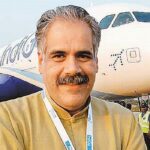” HAVE A HEART GIVE A HEART ” – Dr. Binoy John


“To give unconditionally is truly divine, but can any act be more divine, when one gives a life itself, even in death.” Dr. Binoy John
On 29 Sep 2018, the world celebrated the World heart day, the theme of which was,‘My heart, your heart’ with an aim to inspire people to take care of not only one’s own heart, but also that of our loved ones. Honouring this theme, I thought it apt to write an article to create awareness amongst the masseson the increasing incidence of heart-failure and especially the utility and efficacy of heart-transplantation in treating this growing pandemicof heart-failure and how each one of us as potential organ donors can contribute to make an impactful difference in saving lives.
Heart-transplantation is considered as the gold-standard in the treatment of advanced and refractory heart-failure, where no medications or machines can help to treat itand sustain life anymore.Heart-failure is a very complex topicin cardiology. So, for the layman’s understanding, heart-failure can in simple terms be described as a reduced pumping efficiency of the left chamber of the heart or left ventricle, which is the chamber which serves to pump blood to the entire body and sustain the function of various organs and thus life. The normal pumping function of the left ventricle or ejection-fraction is 55 to 70% and patients with advanced heart-failure have an ejection-fraction of less than 30%, as one of the multiple criteria.
In general, with advances in overall health-care and cardiac-care, use of refined and sensitive diagnostic tools and with procedures as coronary angioplasty and stenting, coronary artery by-pass graft surgery, valve therapy and various other life-saving procedures, the survival and life-expectancy of the general population have increased. However,this increased survival comes at the cost of more and more patients ending upwith heart-failure, as they age. Globally it is estimated at least 26 million people suffer from heart-failure and in Asia the prevalence of heart-failure is found to be higher than compared to the west, affecting 1.3 to 6.7% of the population and in India it is estimated that 1.3 to 4.6 million people are affected by heart-failure, with 0.5 to 1.8 million new cases of heart-failure being diagnosed every year, which actually may be an underestimate. However, sadly the number of heart transplantations that happen around the entire world approximate onlya measly 3800 to 4600 per year with a recent further decline in numbers, with 7% of all cardiovascular deaths being due to heart-failure, clearly exposing the stark shortage in hearts available for transplantation, mirroring the paucity of heart donations and thus exposing an unmet need of heart donors.
Heart-failure can result due to various causes, few of which may be reversible if detected on time but many are invariablyprogressive. Damage to the muscle of the heart-pump can occur due to heart-attacks or can occur due to causes other than heart-attacks. Causes other than heart-attacks can be genetic or familial or can be from causes like poorly controlled diabetes, thyroid disease, obesity (excess body-weight), substance abuse like cocaine, chronic alcoholism, iron-overload, following pregnancy, following certain viral infections, acquired immunodeficiency syndrome (AIDS), sudden severe stress, nutritional deficiencies like thiamine (a vitamin of the B-complex) and from some medications used to treat certain cancers, to mention a few. The risk factors for developing heart-failure include uncontrolled hypertension or high blood pressure, uncontrolled diabetes and atherosclerotic disease or blocks in the arteries which supply blood to the heart.
Heart failure can be staged as A, B, C and D and once it sets in, is characterized by breathing difficulty which may be only mild initially but then progresses with time,to levels where the individual cannot perform even their daily personal activities like bathing or dressing up without help and eventually reaching a stage where the individual is breathless even at rest. As the failure progresses there will also be fluid accumulation in the body and abdominal cavity, worsening the condition and reaching a stage where the patient needs hospitalization for administering intravenous medications and oxygen and sometimes even needing elective artificial ventilator support for treating the severe breathing difficulty due to fluid accumulating in the lungs and thus survival. Eventually, the frequency of hospitalization becomes more with the heart-failure reaching a terminal stage where even hospitalization cannot helpto sustain life.
For stages A, B and C heart-failure, the 5 year survival is 97%, 96% and 75% respectively. However, once in stage D the 5 year survival is only 20%. The absolute mortality (death) rate from heart-failure is approximately 50% within 5 years of diagnosis of heart-failure, despite advances in treatment. Once hospitalized and discharged, the need for repeated hospitalizations for these advanced heart-failure patients become more frequent, with a 1-month hospital readmission rate as high as 25%. The biggest impact on the patient is in the quality of life being affected with daily life turning miserable. The quality of life for patients with heart-failure is the worst when compared to other chronic diseases. The patient becomes totally dependent on others for his daily needs and there is a big impact on the family in terms of mobilization of human and financial resources.
Many of these advanced complications and sequelae can be prevented and or delayed with periodic consultations with the doctor and identifying any risks well in advance and making the necessary life-style changes and use of medicationsas prescribed. With a lot of research going on in heart-failure, there have been the emergence of numerous newer diagnostic tests and therapies which have served to improve diagnosis and treatment, importantly improve the quality of life and reduce the need for recurrent hospitalizations in these patients, to an extent.
However, with so much of suffering from heart-failure, it is still not widely known to the patients or the lay-public that heart transplantation provides the most effective treatment for end-stage heart-failure and provides the recipient with an excellent quality of life and a median survival approaching 11 years. But, with all these advances in care and proven benefits of heart transplantation, even 50 years after the first successful heart transplantation way back in 1967 by Dr. Christiaan Barnard in South Africa, there is still a huge vacuum in the awareness on the scope of this proven life-saving procedure.
The protocol for a heart transplantation however involves a huge concerted multidisciplinary team work involving a lot of people from various specialties including cardiologists, cardiac surgeons, transplantation coordinators, nurses and paramedics all simultaneously involved in a speedy procurement of the heart and facilitation of the procedure with the least delay, even at the oddest hours of the night.
It is also important to note that all patients with advanced heart-failure are not eligible for a heart transplantation. There are many factors which would make a patient a poor candidate for a successful heart transplantation and many factors which would make a patient an excellent candidate for heart transplantation, which is decided by various parameters and tests by a transplant cardiologist. Thus, the patients with advanced heart-failure are carefully selected and those eligible for heart transplantation are entered into a list of potential recipients, a procedure called listing. Due to the distressing lack of availability of hearts, it is only the most sickest in the list who would be eligible for receiving a heart from a potential donor, when available. The transplanted heart however is seen as a foreign body by the recipient’s body and the recipient’s body tries to reject the donor heart, as soon as both are in contact with each other, a process called rejection. Therefore, due to this risk of rejection of the heart from the body, the heart is allotted only after age, size, blood group and other key immunological factors are matched as perfectly as possible between the donor and the recipient, which are crucial for reducing the risk of rejection. If there is a mismatch between the donor heart and the recipient, the heart is then allotted to the next sickest patient in the list, until the best match is obtained. Following heart transplantation, these patients are put on medications which help to prevent rejection and are then placed on close follow-up with the treating specialist.
There are numerous patients being listed globally for heart transplantation and more than half of these listed patients die waiting for a heart, some waiting for as long as three years in vain. The best centres in the west perform as many as 130 heart transplants a year, which is like one heart transplant every two or three days, with notable success and long term survival. Even with the proven success of heart transplantation and with survival rates as high as 90% at 1 year, 71% at 5 years, 50% at 10 years, 20% at 20 yearsand close to 15% at 25 years, the number of heart transplantations are at a dismal low, yet to pick up in developing countries due to a huge shortage of donors. This is more because of a lack of awareness amongst the public on the beauty of heart transplantation in saving lives and how a heart donation can help give a new lease of life to the recipient and thus can make a life-turning difference for the family too.
So who are the potential heart donors? Any personis declared as dead only when the person is found to be brain dead or brain-stem dead. Brain death is confirmed only after extensiveand stringent neurological tests. Once a patient is brain dead they can never come back to life, even though the heart may continue to beat for a while even after the person is brain dead. The heart continues to beat after brain death in individuals who die primarily of brain related causes than heart related causes, like a massive bleeding in the brain or a severe head or brain injury due to accidents or other causes. These persons who die of non-heart related causes are likelier to have healthy hearts which are in excellent condition and are the best for heart transplantation and for functioning well in the new body. Thus theusual people who have their hearts removed or explanted are those patients who have primarily suffered severe brain injury and are declared brain dead. However, due to the severe shortage of donor hearts, hearts which have stopped beating are also being used for cardiac transplantation of late, in order to help benefit more heart-failure patients. Varioustests are then performed to assess the donor heart condition and function. In some of these hearts even a coronary angiogram is performed to ensure that the heart is perfect and healthy. Meanwhile blood tests are also done to see with which recipient on the list the heart would match. The best match ensures the best post transplantation results. The heart has to be then removed/harvested as quickly as possible from the donor, while it is still beating, immersed in special solutions and ice, transported and then transplanted into the recipient’s body as fast as possible, because the time the heart can remain with good function for a good heart transplantation success called the ischemic time should not exceed 6 hours, and should be ideally as short as possible. The ischemic time has a bearing on the success of the heart transplantation procedure and the survival and longevity of the recipient after the surgery. Once the heart transplantation is over, the hurdles are in preventing the heart from being rejected by the body which is a battle won with proper donor-recipient match and with the help of lot of new medications which can help prevent rejection and fight infections. Majority of the transplanted patients enjoy leading an almost normal life.
Thus, there are many patients who succumb to death daily from this incapacitating condition merely for the want of a heart, with many being in their younger and productive age groups. The major hurdles faced in performing this life saving procedure arein getting sufficientheart donors, in reducing the time wasted on counseling the potential donor’s family for encouraging a heart donationand then the time wasted in traffic duringtransportation of the heart in developing countries. The delays in decisions on organ donation can be easily circumventedby creating awareness (as narrated above) amongst the young people to pledge their heartsin advance, by making them understand the significant success of heart transplantation surgery not onlyin saving lives but also on how it helpsin adding several years and even decades of quality life to the liveswhich would otherwise have been lost andthe difference it brings to the recipient’s family.
What more satisfaction can there be than having the gratification of having one’s heart or the heart of their loved one still beating in another body and sustaining a life andmore importantly the divinity in the deed of actually being able to give a life and also add years of life to another on the brink of death, than just lose two lives. This should be inspiration enough to encourage more people to come forward and pledge to donate their organs and heart. In giving, our joy is only multiplied and I am sure every one of us have at some time relished and experienced the immense joy in giving something to others and one can only imagine the ecstasy and divinity, when it is a life that you have the choice and power to give. “To give unconditionally is truly divine, but can any act be more divine, when one gives a life itself, even in death.”So, in this humble endeavour of mine, I would prefer not to conclude by saying, “Have a heart, give a heart” but by appealing, “Have a heart, give a… LIFE!”
DR BINOY JOHN MD DM (CARDIOLOGY) FCSI FACC FESC FSCAI FAPSIC
CHIEF CONSULTANT INTERVENTIONAL CARDIOLOGIST
DR RELA INSTITUTE AND MEDICAL CENTRE
CHENNAI









